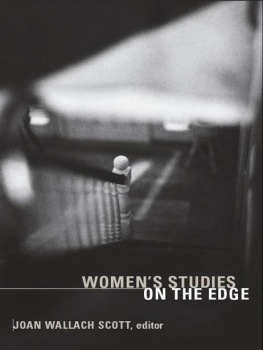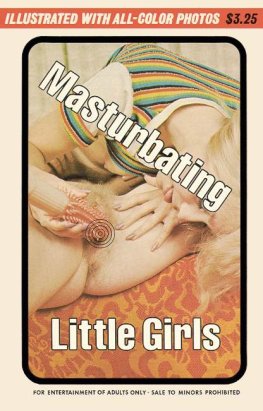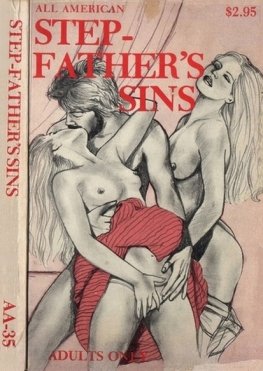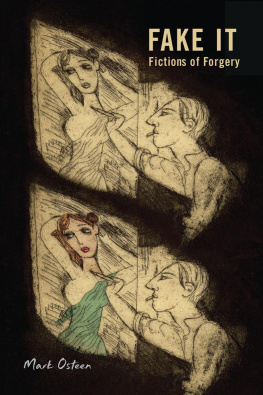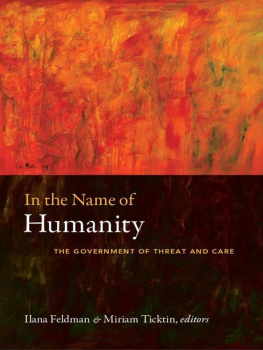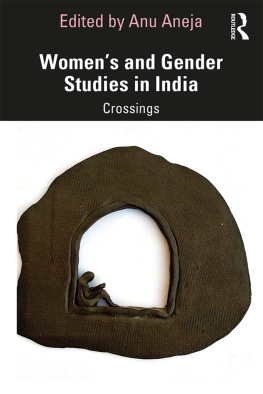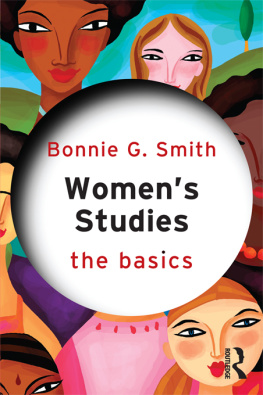Unknown - Womens Studies on the Edge (Differences Books)
Here you can read online Unknown - Womens Studies on the Edge (Differences Books) full text of the book (entire story) in english for free. Download pdf and epub, get meaning, cover and reviews about this ebook. year: 2008, publisher: Duke University Press, genre: Politics. Description of the work, (preface) as well as reviews are available. Best literature library LitArk.com created for fans of good reading and offers a wide selection of genres:
Romance novel
Science fiction
Adventure
Detective
Science
History
Home and family
Prose
Art
Politics
Computer
Non-fiction
Religion
Business
Children
Humor
Choose a favorite category and find really read worthwhile books. Enjoy immersion in the world of imagination, feel the emotions of the characters or learn something new for yourself, make an fascinating discovery.
Womens Studies on the Edge (Differences Books): summary, description and annotation
We offer to read an annotation, description, summary or preface (depends on what the author of the book "Womens Studies on the Edge (Differences Books)" wrote himself). If you haven't found the necessary information about the book — write in the comments, we will try to find it.
Unknown: author's other books
Who wrote Womens Studies on the Edge (Differences Books)? Find out the surname, the name of the author of the book and a list of all author's works by series.
Womens Studies on the Edge (Differences Books) — read online for free the complete book (whole text) full work
Below is the text of the book, divided by pages. System saving the place of the last page read, allows you to conveniently read the book "Womens Studies on the Edge (Differences Books)" online for free, without having to search again every time where you left off. Put a bookmark, and you can go to the page where you finished reading at any time.
Font size:
Interval:
Bookmark:
A DIFFERENCES BOOK
DUKE UNIVERSITY PRESS
Durham and London2008
2008 Duke University Press
All rights reserved
Printed in the United States of America on acid-free paper
Designed by Amy Ruth Buchanan
Typeset in Dante by Achorn International
Library of Congress Cataloging-in-Publication data appear on the last printed page of this book.
FEMINISMS CRITICAL EDGE
In a 1984 seminar at Brown Universitys Pembroke Center for Teaching and Research on Women, the French philosopher Jacques Derrida speculated about the institutionalization of womens studies in the academy. There would be a double effect, he said. When womens studies became what he playfully described as just another cell in the university beehive, its legitimacy would be established, its future secured. At the same time, he warned, such triumph was not without its costs. These involved above all the disciplining of the field, the imposition of a certain orthodoxy, and so the dulling of its critical edge.
Do the women who manage these programs, do they not become, in turn, the guardians of the Law and do they not risk constructing an institution similar to the institution against which they are fighting? It is certain that the range of work in womens studies is enormous, and that there are already a considerable number of problems to pose, of bodies of work to study, of objects to define, and that womens studies has a great future. Nevertheless, if this future is of the same type as that of all other departments, of all other university institutions, is this not a sign of failure of the principles of womens studies? (Women, differences 142)
The discussion that followed pushed on many points, among them whether the increase in the numbers of women teaching and in the knowledge they were both producing and transmitting was not itself subversive in an institution that had been (to use one of Derridas words) phallogocentric (male in composition; masculine in focus; and committed to protecting the Lawthat is, the foundational premises of the university). Would not the sheer presence of more women itself be a rebuke to male dominance? Were we not, as teachers and researchers, challenging what counted as knowledge and who counted as knowers? Did that not imply exactly the revolutionary transformation feminism sought? Did it matter whether the revolution was achieved by means of separate womens studies programs or by infiltrating the disciplines, feminizing the curriculum, integrating women everywhere: in history, philosophy, economics, sociology? (14445). Either way, did we run the risk of affirming a system we sought radically to alter?
Derrida conceded the risk; indeed, he saw no way out of it. So a problem arises: if you keep the philosophical axiomatics, implying that women are subjects, considering women as subjects, then you keep the whole framework on which the traditional university is built. If someone tries to deconstruct the notion of subjectivity within womens studies, saying well, woman is not a subject this would have two consequences, one radically revolutionary or deconstructive, and the other one dangerously reactive (145). On the one hand, to say women are not subjects is to question the idea of the subject as it applies to men and women, to the rights-bearing individual in our culture; on the other hand, to say that women are not subjects can be heard to confirm their exclusion from citizenship (whether in the state or the academy), to accept the very terms of their inferiority to men. This tension between revolution (a refusal of the prevailing philosophical axiomatics, whether of gender or capitalism or liberal democracy), and reform (working within the terms of those axiomatics to improve the lot of women or workers or other others) is not peculiar to feminism; it was at the heart of the great movements for change in the nineteenth and twentieth centuries. Although the terms reformist and revolutionary were often used as epithets among factions in these movements, in fact the tension was evident in all camps. To what extent would tactical decisions compromise strategic goals? What was the relationship between long-term and short-term strategy? Would change in one arena necessarily bring about change in another? How could revolutionaries bring down a system by operating within it? How would you know when the revolution had happened?
The discussion with Derrida took place at a heady moment for womens studies. In the mid-1980s foundations and university administrations were recognizing the need for such programs, in part under pressure from students and faculty, in part in response to the richness and relevance of the work being done, and in part because (despite the defeat of the campaign for an Equal Rights Amendment to the Constitution) some feminist principles had been incorporated into national political agendas. Still, womens studies was hardly a full-fledged partner in the university curriculum, so the sense of engagement and the need for vigilance remained. We were embattled, yet on the verge of success. Those were amazingly productive and exciting years.
It is true that the 1980s were also the Reagan years, the beginning of the conservative reaction that has steadily gained ground. But at the same time, they marked the coming of age of second-wave feminism and what, in hindsight, could be called the last stand of the liberal university. Affirmative action not only remained in place but had begun to yield some of its intended results: more women and minorities were gaining admission to higher education as students and faculty; diversity was considered a desirable goal; and the quest for new knowledge was challenging the teaching upon which systems of white male privilege were based. In that context, womens studies gained institutional footing and funding in the form of faculty lines and/or joint appointments, student majors, and even degreegranting graduate programs.
How times have changed! On the eve of the new century, the sense of open-ended, utopian possibilities was fast disappearing, replaced by nostalgia for an increasingly idealized past. The only millennial expectations many of us had were anxieties about computer failures. Affirmative action was under attack even by some of its presumed beneficiaries, and feminism had become a dirty word. Not for everyone, of course, but the numbers of young women who wanted to have it all and yet swore they were not feminists were distressing to those of us who knew better. After all, Title IX let girls dream of playing sports seriously, the fierce battles to protect Roe v. Wade made pregnancy a choice, and the knowledge produced by legions of psychologists, biologists, anthropologists, historians, political theorists, sociologists, and even economists had undermined gender stereotypes and so granted access to professional careers once closed to women. The desire to have it all is a feminist fantasy; the possibility of even entertaining that desire exists because of all the agitation the womens movement engaged in, especially during the 1970s and 1980s. Todays young women are the beneficiaries of the womens movement, whether they know it or not.
The turn away from feminismstill evident as I write these linesis part of a historic development that achieved fruition in the 1990s. It is best characterized as the ascendancy of ideologies of individualism and of corporate management, the apparent contradiction between them resolved within a framework of neoliberal economics. There were many converging factors, among them Supreme Court decisions that gave less credence to class action law suits against discrimination, requiring instead proof that individuals had been harmed; campaigns against affirmative action programs that took the form of law suits on behalf of victims of these programs (most often white men with higher test scores than those minorities given preferential treatment in university admissions); and the replacement of analyses of the structural causes of discrimination by emotional appeals to the experience of victims. The restructuring of universities is yet another development. This includes the turn to corporate models of administration and governance and, increasingly, to former CEOS to lead the academy; the redefinition of ideas as commodities and of students as fee-paying clients; the substitution of vocational ends for humanistic ones; and the emphasis on acquiring factual information rather than learning to think critically. Indeed, it was the universitys role as the crucible of critical thinking that was most worrisome to the radical Republicans whose reign ushered in the twenty-first century.
Font size:
Interval:
Bookmark:
Similar books «Womens Studies on the Edge (Differences Books)»
Look at similar books to Womens Studies on the Edge (Differences Books). We have selected literature similar in name and meaning in the hope of providing readers with more options to find new, interesting, not yet read works.
Discussion, reviews of the book Womens Studies on the Edge (Differences Books) and just readers' own opinions. Leave your comments, write what you think about the work, its meaning or the main characters. Specify what exactly you liked and what you didn't like, and why you think so.

